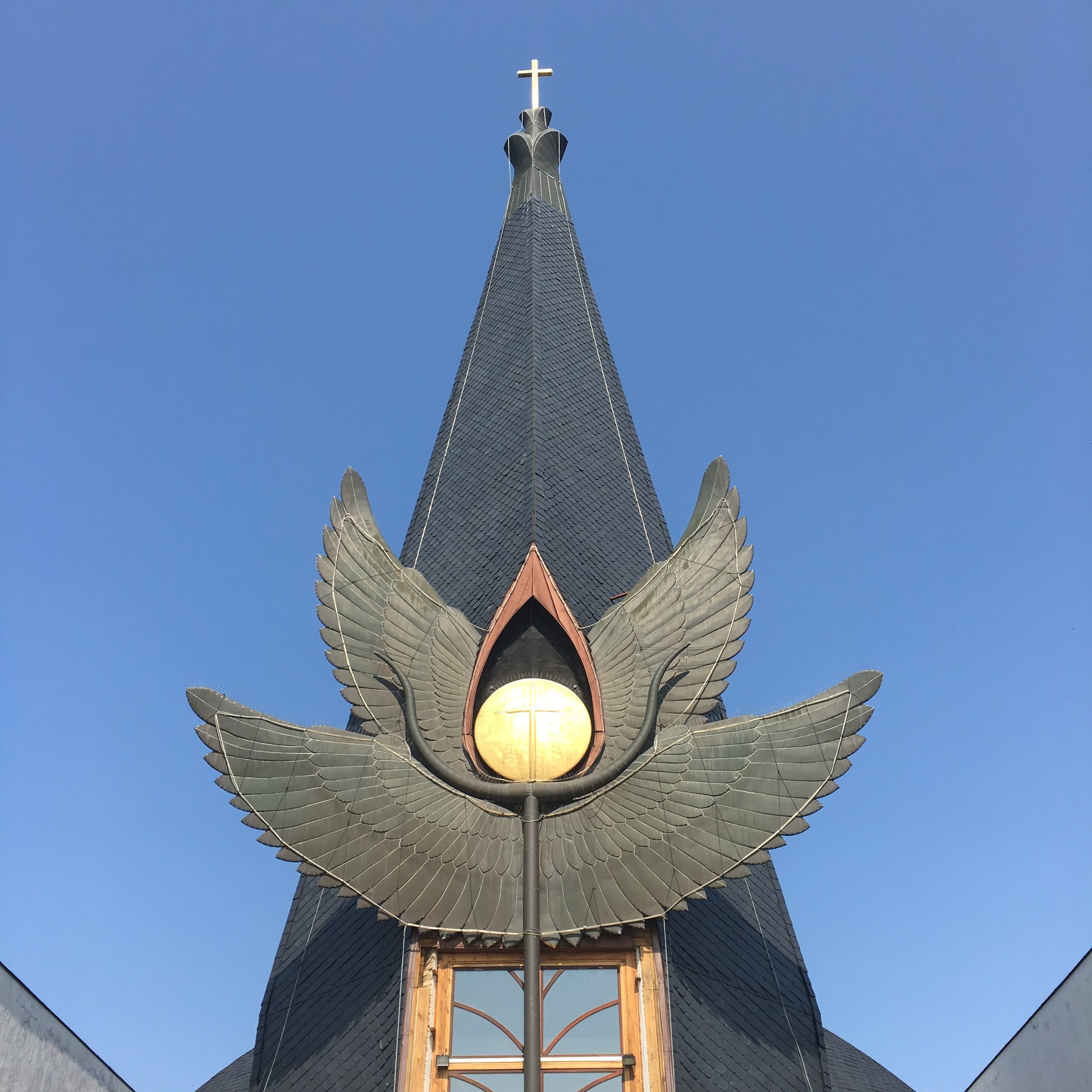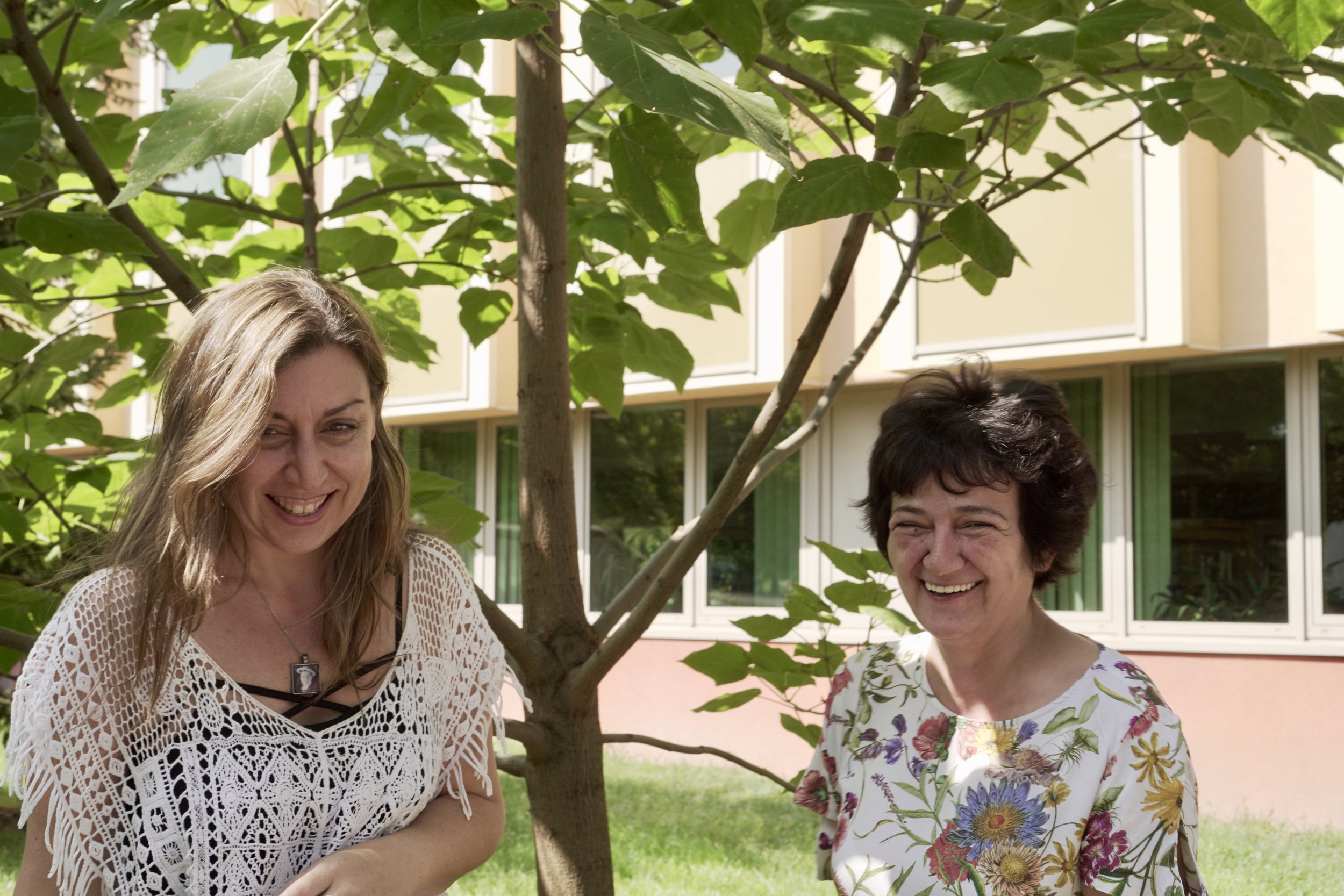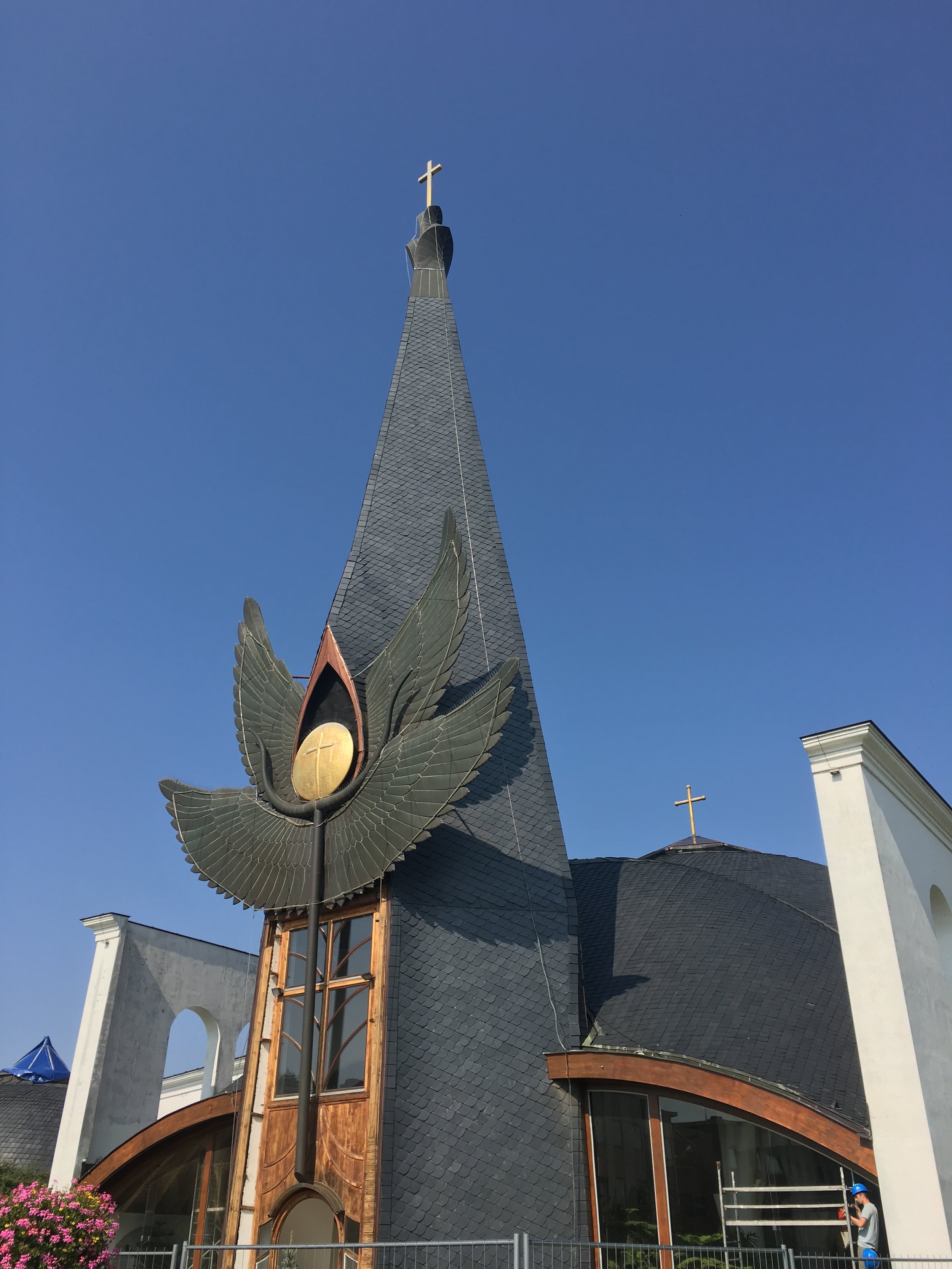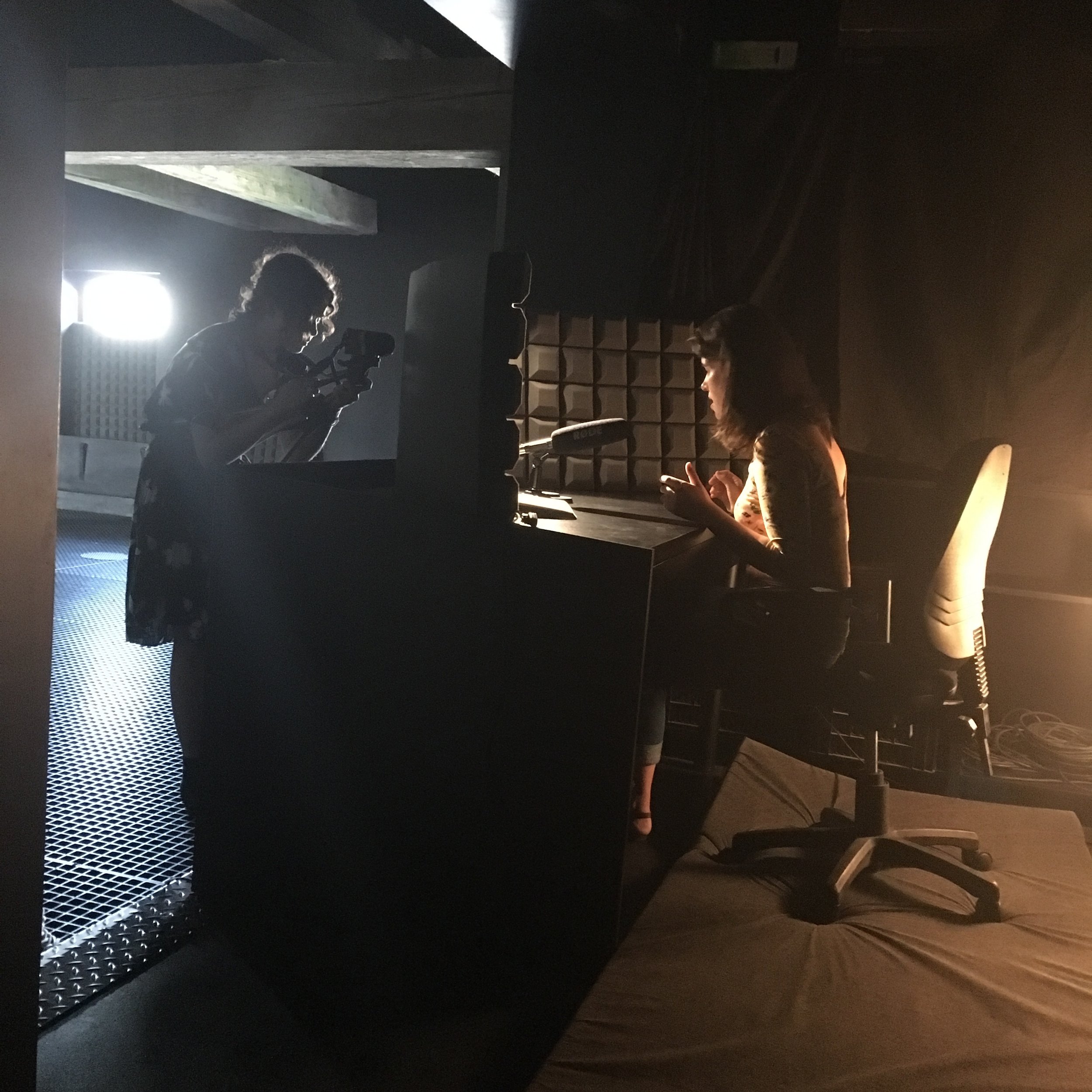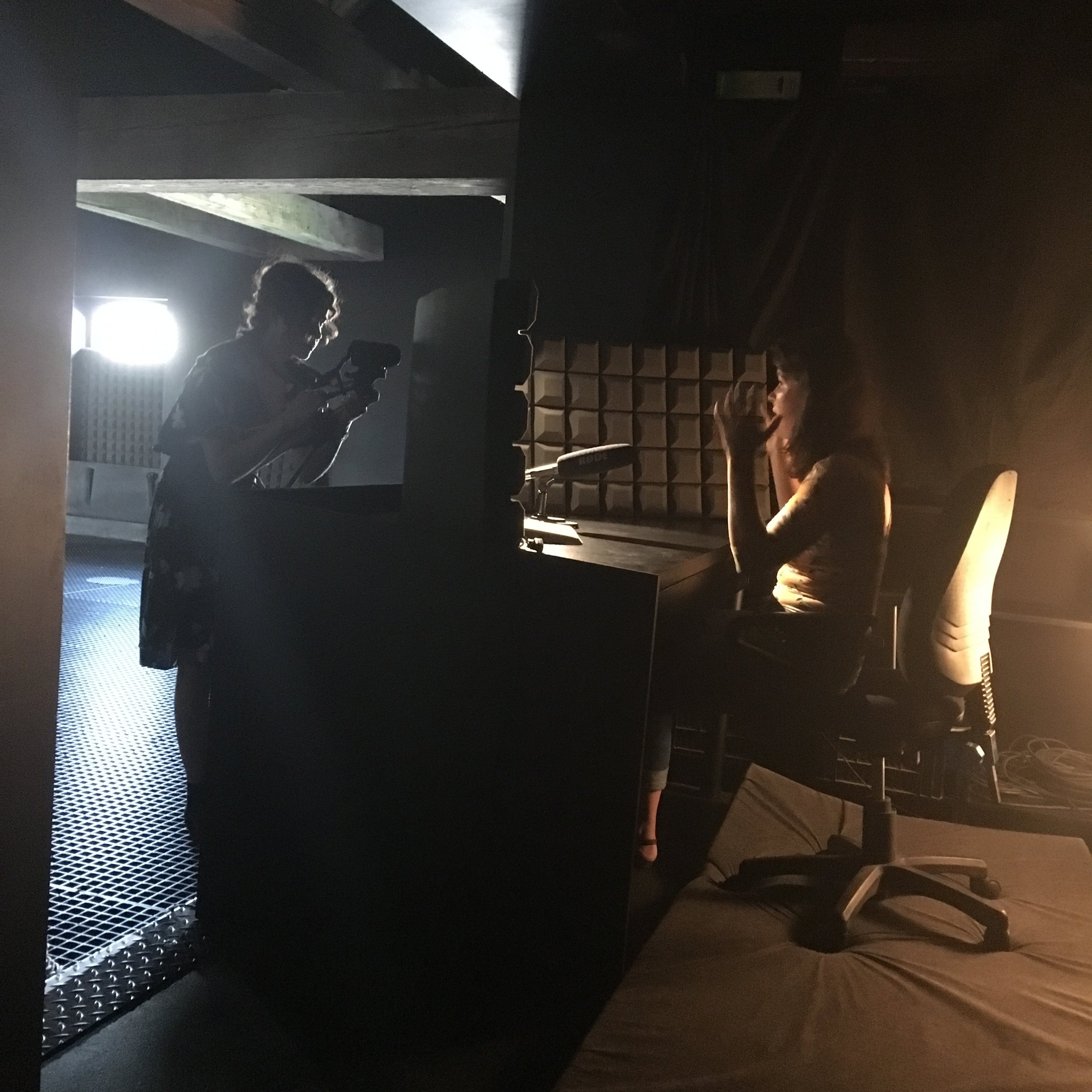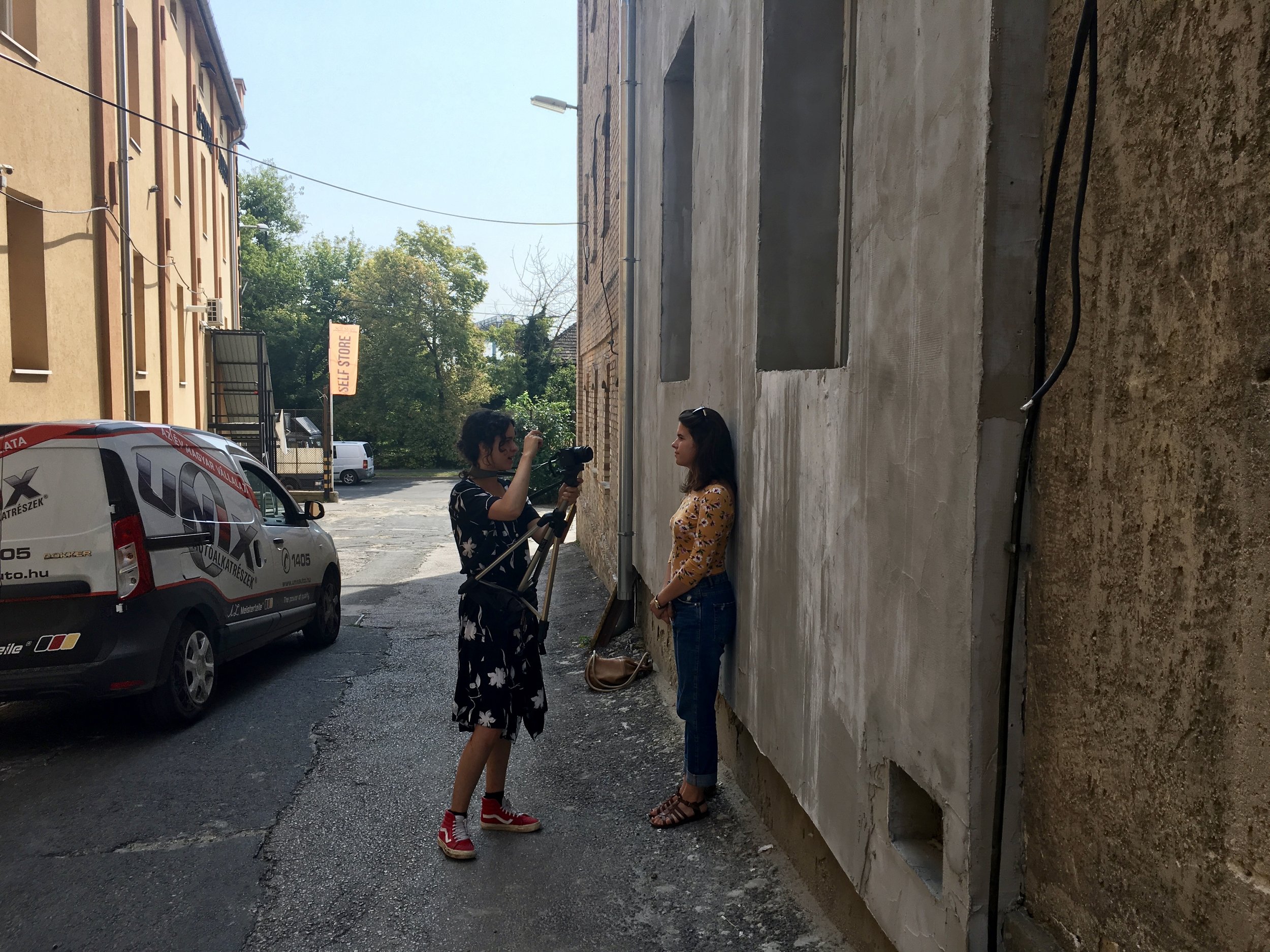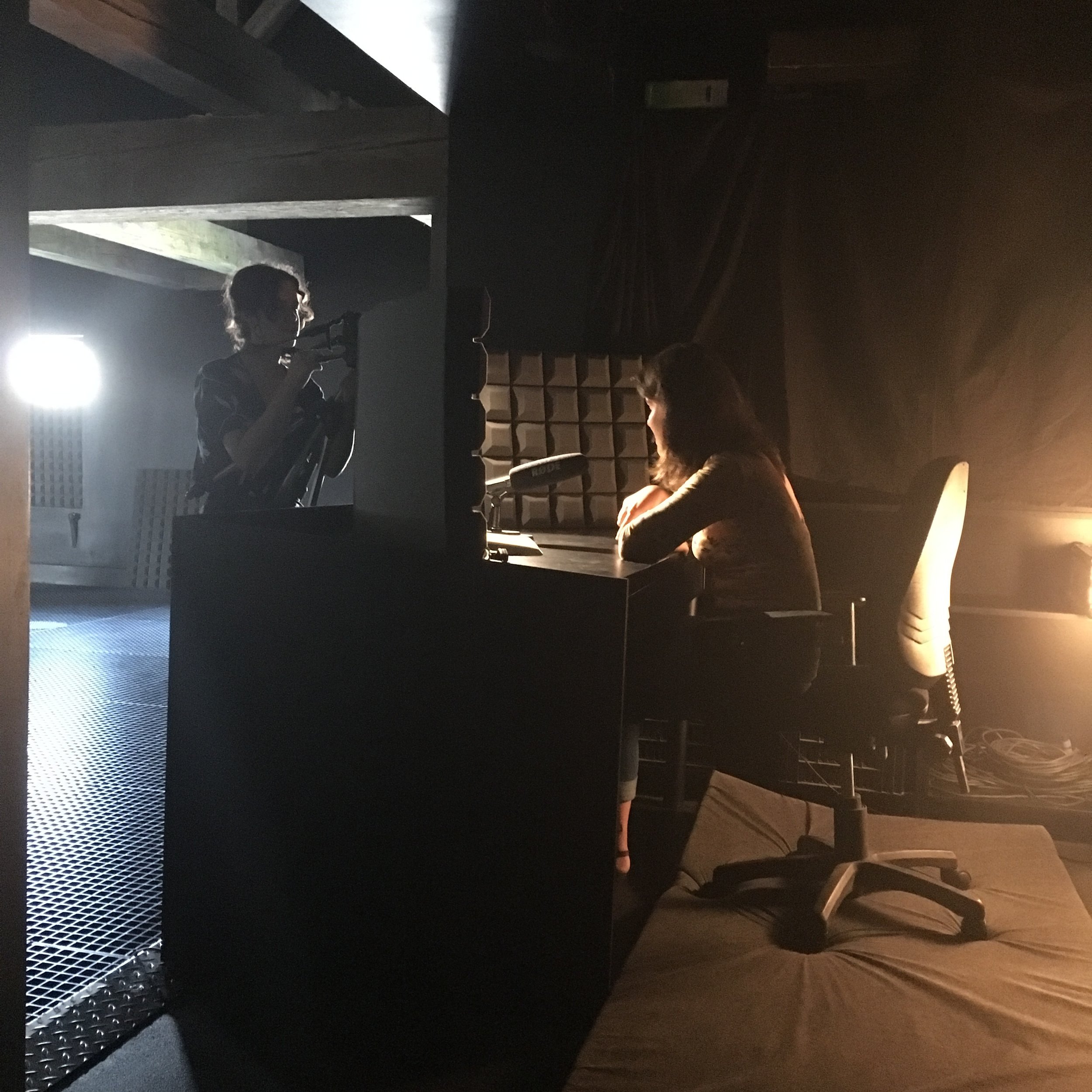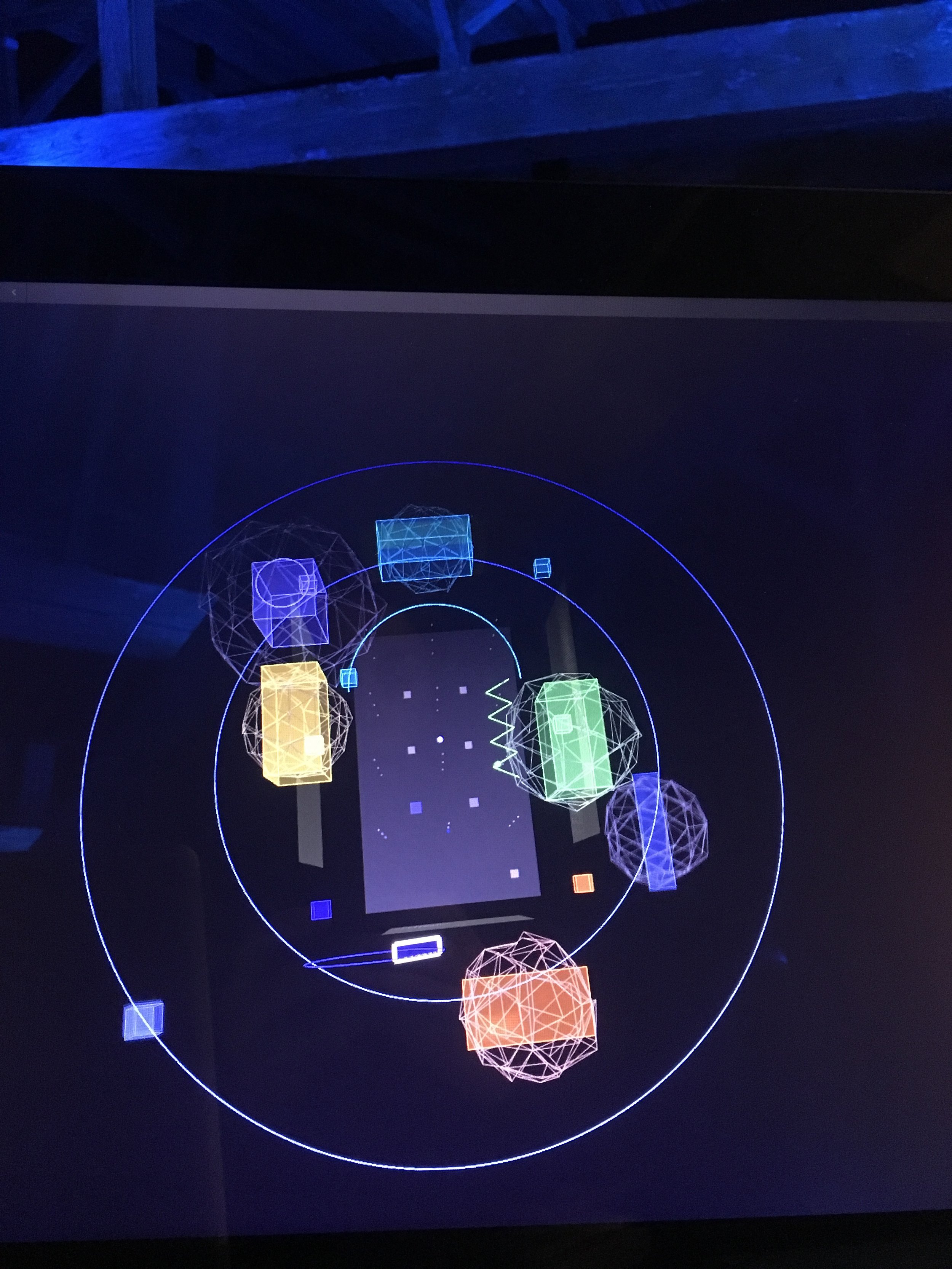8 – Százhalombatta, studio developments, and where is the mother?
We travel out to Százhalombatta, about half an hour south of Budapest, to record Marianna. Marianna is director of the Hamvas Béla City Library in Százhalombatta. Born in an almost fully Croatian-speaking village, Drávasztára, along the River Drava in southern Hungary, Marianna’s storytelling combines two cultures and two languages. She has been a storyteller for more than ten years and is an active advocate of traditional oral storytelling – she organizes storytelling conferences, started the Day of the Hungarian Folktale movement, and is president of the Meseszó Association for Hungarian Storytelling and Oral Folklore.
Meeting Marianna is a lovely experience. We do not speak each other’s language, so we communicate through a translator. But we do speak a common language, of storytelling. After recording her story we continue to talk about the joy of storytelling and the importance of story. Marianna asks me a thought-provoking question regarding my separation of the storyteller’s physical presence in this work. I love that she questions me on this. It’s something I’ve questioned myself on. Especially since I’m sitting across from Marianna as she tells her story and I’m transported by her eyes, her smile, her guiding attention. The way she leans forward and lowers her head when slowing the story down for the message or the punchline; the way she leans back and raises her voice defining moments of action. These presences are there in the recordings, in the dynamics of voice and language. And I do believe that sound is physical, that our experience of sound and language is a bodily experience. Part of the concept of this project is to take people into their own experience of listening to stories; into their own memories of the storytellers in their own lives. So in that, in listening we will cast the story with our own images and characters – this is one of the things I love most about spoken word, listening. I also believe that the visual is not necessarily the defining aspect of presence. So much of us is in our voice. But I can understand why a storyteller would question why the physical body of the teller is absent. And what does that mean? It’s not something I can easily answer. I hope that all of these storytellers will be able to come and witness the work when it is finished. At the same time I’m afraid of disappointing them.
Mónika is my final storyteller to record. I have much better luck recording in the 4DSOUND makeshift studio with a quiet day at AQB. Mónika’s dialect is the western Palóc dialect. She was born in the westernmost Palóc town, Kéménd (Kamenín, Slovakia). It is a very ‘sharp’ and dynamic dialect, and Mónika’s intonation and telling is bright, big, powerful and energetic. I get such a strong image of rising, and falling, as she tells the story – I can feel the descent as the princesses go down into the forests. I can feel the energy of the fighting devils. In this version of the story the princesses are dancing with devils, are assisted by a witch, and are all excepting the youngest locked up by their father in the end. This is the darkest story, from the northern regions. I’m excited, listening to Mónika. Her energy is so awesome and youthful, a counterpoint to the quieter and softer voices.
With the door to the bottom right … the foundations of the “regions”. The blue arc is the movement of the cows; the zig zag is the movement of the wasp.
In the studio, I’m illustrating ‘scenes’, working on ascending/descending tones for the transitions, working with the voices I already have as objects in the space, experimenting with their movement and chorusing. Csenge is translating the recorded stories for me so until then, I work on the sound illustration. Some things are working well, some things feel really stuck. The modulated rising tones are working great (with thanks to Vlad for helping me get the right intensity). A heartbeat drum under the floor is sounding the resonating frequency (with thanks to Paul for finding that). The twig snap, not so much – sounds like the speaker is broken. The footsteps of Kati’s dancing are not working in the way I’d hoped and the songs recorded also, in Bordány – anything too literal, basically, is not feeling right. That’s … interesting.
The opening soundscape, of the ‘regions’, is working though. Really well. It isn’t really possible to separate the regions in the way I thought I would. To get the right intensity of sound in the space, the right drama, they need to merge. It’s not like passing through walls or rooms, more like subtly shifting energies, and focus. I think this is a more interesting situation actually.
This is the world we enter: From the door, you move in through the oscillating sounds of crickets. The birds and further-away sounds are filling the room, with varying distance and clarity. Walking straight, along the right wall, you pass through the Bordány fields, with a wasp zooming up and down (my favourite creation!) Reaching the far corner, the bells of Transylvania’s cows become more distinct, and the birds and dogs of Sepsiszentgyörgy wash in from a distance. Moving across to the left, Budafok storms and rain, and crows. Back down the left wall, a forest of songbirds. And in the far corner, the bottom left, is the Százhalombatta fountain, recorded this week. I’m still toying with what to do with the middle. The Danube river running across the room? I work on balancing the various environments, which are basically large objects in the space working with variations on spatial delays and sends to the reflective ‘walls.’ They are also subtly moving, modulating. Particularly for the forest, bird sounds, this slight movement adds a surprising amount of space. For the crickets, it’s important – that is a plane, deep under the floor, modulating in all directions. You never know exactly where a cricket is … This and the spatial delay also seem to erase the awareness of the (necessary) looping of the sounds. I’m not trying to create a naturalistic environment, I want it to be unreal, a dark fairytale. But I don’t want it to be too obviously ‘looping’ either.
I spend almost a whole afternoon making sure the cow bells are really, believably, moving around at “cow height” ……. that sort of thing.
I joke at one point that in many exhibitions, just this walk-in state would be the whole damn thing…
Anyway. This is basically the “map”, as described earlier. And this is the “walk-in state”; the preparation soundscape. I want people to linger here for a while before the show starts; to lose themselves first in this abstracted landscape that hopefully triggers some sensibility of magic. I want them to have a long period of time to settle into the space, to be in a receptive state to hear the stories.
I’m taking this lesson from Kate de Lorme’s work. She had the voices of four or five of us residents swirling around the room, above the audience's heads (these are the voices I mentioned in part 2) as the walk-in state. It was meant to go for 15 minutes or so until the audience settled but due to delays waiting for people to come in, it was at least 20 minutes of this, maybe half an hour, and the loop of content became obvious. I went through a series of mental states whilst waiting – listening with interest, wondering about the delay, checking out the other audience members, being drawn back in to listen to the voices, thinking about the things I’d said and the things others had said about confidence, lack of confidence, and so on, feeling the twinge of that lack of confidence again, putting that aside, getting bored and restless, thinking about my to do lists, getting drawn back in …. so I went through the cycle of attention/boredom and reached a point where I was 100% present, and receptive. Then the show began with the voices fading, and Kate’s voice looming large: “You are safe.” I cried a little.
Then another lesson, from the experience of Sydney artist Tiernan Cross’ work, which was programmed without a break following another electronic work in the studio. I felt as though the audience for his work were not prepared, were not present yet as it began. Perhaps the impact of the work was affected because of that. This is only my experience, of course. But the difference was notable to me. Tiernan’s work is definitely one of my favourite of the works I’ve heard in the 4DSOUND studio. His use of crisp, clear, electronic sounds, the dimensionality and speed of the movement was really profound. I felt as though he really “sounded” the room. He gave the room voice. I felt as though the character of the place was expressing itself through his sounds. When I first heard it, when he played it to us before the exhibition, it was unexpectedly very moving. In exhibition the lack of space around his piece made it harder to ‘settle in’ to be receptive to it.
The practices of Pauline Oliveros – the deep listening practices – are about preparing yourself to be open and responsive to the rhythms, melodies, connections of sound and aural experience. It’s not just an internal process, it’s also about being open to collaborative composition and collective experience. Environments like the 4DSOUND studio invite audiences into communal deep listening practice. We need to help them enter a receptive state. Because active listening can be difficult. And in my work, I’m very aware that I am asking a lot of people, to listen to an hour of story. So, I want this “walk-in state” to go for some time. I want people to walk around, explore the whole breadth and length of the studio, stop, move, listen. Then, when everyone is really settled, really present, the story begins.
Since the folk camp in Válaszút, I’ve been thinking about the folk song. One night I place it into the object that I have on a path from deep below the room to high above. That object has been the foundation of the ascending sound that will plunge us down, into the forests. I have it on a path from deep under, growing in size and triggering the reflective walls as it takes over the room, then flying above. I’ve used it with deep frequency drones, modulated basic synth sounds. Putting this song into this object is something else. The recording of course is a rough stereo recording from the Zoom hastily turned on on a wooden floor in a big open hall. And because of the recording’s fuzzy nature it becomes ethereal in this space, like something from another time.
Emotionally, it feels ‘right’ somehow too, but I still don’t know why. I play it to Paul, who later plays the song to his wife and tells me that she recognises the song, and that it is a song about a mother. The song describes “all of the wise things my mother told me, that I did not listen to.” Csenge and I had been discussing the lack of the mother in this folk tale. In all of these versions – and in fact, in many folk tales around the world – the mother is entirely absent. Where is she? We joke about the fact that if the mother had been around, none of this nonsense would have happened in the first place. But it holds a deeper significance of course. And I think this absence, and the impact of the folk song on me, is a piece of powerful magic. I’m growing accustomed to magic, here in Hungary. I don’t question it. And then I remember that the third point to this triangle of magic is Csenge’s story (in the coda to her version, the princess asks her husband years later how he was able to stay awake and discover what she and her sisters were doing. He answers by telling her three pieces of advice he was given by his mother.) So, I want to end this show with this song. When the story is over, the drama and the resolution have happened, in total darkness the chorus of song will rise up from deep below, fill the room, and float up into the roof where it will disappear, leaving us in silence.
All the story recordings are done, I have a swag of field recordings to play with, I have recordings of dancing feet and a great trio of musicians playing razor blade music. The first stage of the residency here is over and I have two months away from it. The studio and most of the residents are leaving AQB for September. The 4DSOUND system is going to Berlin. Most of the other artists are leaving too. The frenetic, hot, magical summer is over and the last few days at AQB are strange and quiet. I’ve got a huge task ahead of me, but first I need to take a break, and make a soundscape for the MPavilion in Melbourne, which feels like worlds away.
